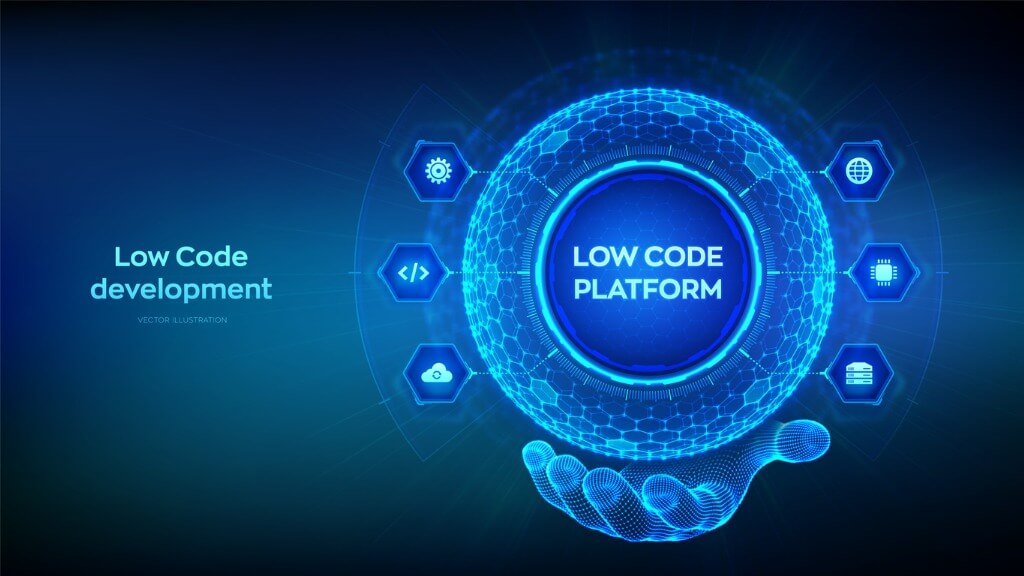Decision Factors: How to Choose the Right ERP System
Choosing the right Enterprise Resource Planning (ERP) system is a time-consuming and mission-critical process. An ERP touches every aspect of your business, from finance to logistics. You need to choose an ERP with features that will support every team in your organization, and you need to know that those features will work as expected.
This article aims to guide you through the process of evaluating ERP systems based on real user feedback. We’re focusing on features and attributes with the most score variance across products. These are the areas where user sentiment says that some products perform much better or worse than others, and they’re a good place to start narrowing your long list to a shortlist.
ERP Specific Features
ERP systems are among the most feature-rich platforms in the business world. They need to be able to support a wide variety of business processes across departments and industries, leading to hefty feature lists. Many of these features receive mixed user feedback, but these five vary the most.
These features range across the spectrum of ERP functionality, from the warehouse to the back office. If any of these capabilities are important to your organization, take an extra look at how the products on your shortlist score, as it could help narrow down your list.

Warehouse Workforce Management
Warehouse Workforce Management involves optimizing labor, tracking performance, and ensuring efficient operations within the warehouse. Managing your warehouse workforce well is key to ensuring productivity in your organization’s logistics operations.
Not every company that needs an ERP has a warehousing operation to support, which might explain why users report that some systems are significantly better in the warehouse management area than others. If your organization has a warehouse to operate, keep an eye on how each of the ERP systems you’re looking at handle it.
This feature receives an average rating of 5.6/10, with scores ranging from 1.2 to 8.4. Oracle Fusion Cloud ERP scores the highest with a rating of 8.4/10.

Award Lifecycle Management
Award Lifecycle Management covers the entire process of managing program funding awards, from initiation to closeout. After grants have been approved, managing the award itself is necessary for ensuring proper use and disbursement of funds.
Much like warehousing, not every organization that needs an ERP needs grant management capabilities. If yours does, though, pay close attention to the award lifecycle management capabilities of any ERP systems you’re considering. This feature averages a rating of 6/10, with a low score of 1.0 and a high of 8.7. Oracle PeopleSoft ERP is the highest performer, with a rating of 8.7/10.

Oracle PeopleSoft ERP supports all of this Assistant VP’s grants management needs.
“PeopleSoft Financials is used across the organization for accounts payable, general ledger, grants, [and] asset management. It addresses the core financial requirements of the organization.”
David Nero | Assistant Vice President of Innovation and Operational Services | University of Massachusetts | Higher Education, 501-1000 employees
Transportation Execution Management
Transportation Execution Management handles the planning and execution of shipping and logistics operations. Good transportation execution management can help your organization improve supply chain efficiency and satisfy customers with speedy delivery times.
Users are the least satisfied with their ERP systems’ logistics capabilities overall. Transportation execution management ties with warehouse execution management for the lowest average of all ERP features at 5.6/10. Scores range from 1.2 at the lowest to 8.0 at the highest. Oracle Fusion Cloud ERP again received the highest rating of 8.0/10, so this product may be a good option to consider if your organization is highly reliant on your logistics operations.

Pay Calculation
Pay Calculation involves automating payroll processes, ensuring accuracy, and compliance with state and federal regulations. Paying employees on time and accurately is important across all industries and company sizes, so this is one to pay attention to.
This feature scores an average rating of 6.6/10, with products ranging across the board from a rating of 1.0 to 10.0. SAP Business One achieves the highest possible rating of 10.0/10.

Location Management
Location Management involves tracking and managing assets and inventory across multiple locations. Good location management capabilities allow for more accurate inventory tracking and more efficient processes, whether for fulfillment, manufacturing, or both.
Location management has the highest average rating of these five, averaging 7.1/10, with a range from 1.3 to 10.0. Oracle JD Edwards EnterpriseOne scores the highest with a perfect 10.0/10.

This process data engineer uses Oracle JD Edwards EnterpriseOne for inventory management, along with other key business functions.
“Basically we use this product as a ERP software with all the functionalities like HRMS, Maintenance, HSEQ, Inventory Management. Basically all the things come under one umbrella and it is easier to maintain.”
Mohamed Adil Shaikh | Process Data Engineer | Shell | Oil & Energy, 10,001+ employees
ERP Product Functionality and Vendor Relationship
In addition to core, definable features, the “intangibles” can make or break an ERP system’s fit with an organization. Attributes like usability and quality of support from the vendor can be hard to evaluate during a buying process and even harder to quantify and check off on a matrix.
Lucky for you, TrustRadius has quantified them for you. We ask real users to rate these “attributes,” as we call them, that are relevant to software buyers in any category on the same 1-10 scale as the features we looked at above. These five areas are the ones where user sentiment varies the most in the ERP category. Factors like these can set apart an okay product from an excellent one, and considering them in your buying process is crucial to ensuring the easiest possible implementation period.

Support
Support is a crucial aspect of ERP systems due to their complexity and integration across various business functions. When an organization implements or upgrades an ERP, there are often challenges and questions that arise. Reliable vendor support ensures that issues are addressed promptly, minimizing disruptions to operations. Effective support can also assist in user training and adoption, leading to greater efficiency and a better return on investment. Furthermore, ongoing support helps organizations keep up with updates and patches, ensuring the system remains secure and optimized.
The average Support rating for ERP systems is 7.2/10. Scores range from a low of 1.0 to a high of 10.0. The highest rated product for Support is Workday Financial Management, achieving a perfect score of 10.0/10.

This Account Director has always had positive experiences with Workday’s support team.
“I have found Workdays’ customer support to be top-notch. Between the e-mails and phone calls I have made to the company, I have seen excellent service. There has been regular follow-up as warranted, and this is welcome.”
Jason Levy | Account Director | Priority Private Care | Accounting, 51-200 employees
Usability
A user-friendly ERP interface reduces the learning curve, making it easier for employees to adapt and adopt the new system. Intuitive design and easy navigation minimize errors and increase efficiency, as employees can quickly find the information and tools they need. When a system is easy to use, it reduces the amount of training required and lowers the ongoing support burden on the IT team. A high level of usability ensures that employees can effectively utilize the system’s functionalities, leading to better data accuracy and overall productivity.
The average usability rating for ERP systems is the highest of any feature or attribute on this list. ERP systems score an average of 7.7/10 for usability, with individual product scores ranging from 1.8 to 10.0. Workday Financial Management again receives the highest rating of 10.0/10.

Workday Financial Management’s usability improved efficiency for this Property Manager.
“Workday Financial Management is an easy to use, productive software suite that really brings all departments together and improves workplace efficiency. Before we began using the software, much info was partitioned in random places that were not clearly labeled or accessible to all shareholders. We are very pleased with Workday Financial Management.”
Lauren Edwards | Property Manager | Colliers International | Real Estate, 10,001+ employees
Implementation
A smooth and efficient ERP implementation ensures minimal disruption to operations and allows employees to adapt quickly to the new system, while a poorly executed one can tank productivity and ruin the chances for system adoption. A well-executed implementation includes thorough planning, data migration, user training, and testing, all of which are essential for maximizing the system’s potential and achieving a positive return on investment. Challenges that arise during implementation can lead to significant delays, increased costs, and resistance from users, underscoring the importance of careful management and support throughout the process.
ERP systems have an average score of 6.1/10 for implementation. Ratings range from 2.8 to 7.8, indicating that even for the best and worst products, sentiments are mixed. So much of every ERP implementation is unique to each company. The highest rated product is Vista, achieving a score of 7.8.

This System Admin had a great experience with Vista’s integration team.
“The Viewpoint Vista implementation team is great at walking you through the entire process of setting up the software. It is a long process but that is to be expected.”
Carlin Lakey | Accounting System Admin | Emery Sapp & Sons, Inc. | Construction | 1001 – 5000 employees
Likelihood to Renew
Likelihood to renew is a crucial indicator of an ERP system’s long-term value and suitability for an organization. High renewal rates suggest user satisfaction and confidence in the system’s ability to meet evolving business needs. It implies the system is functional, adaptable, and supported by a vendor committed to ongoing improvement. Conversely, low renewal rates can signal underlying issues with the product, such as poor performance, lack of support, or an inability to scale. Evaluating likelihood to renew can help businesses make informed decisions and avoid costly disruptions associated with switching ERP systems.
The average likelihood to renew score for ERP systems is 7.6/10, with scores ranging from 4.6 to 9.3 across different products. This range tends toward the higher end than a lot of other ratings on this list, likely due at least in part to the time and cost associated with switching ERP systems. The highest rated product for likelihood to renew is Acumatica, achieving a score of 9.3.

This AP Supervisor appreciates Acumatica’s continued innovation.
“Acumatica keeps updating every year and adapting to all the changes especially with AI capabilities, user interface, interactive assistant, and many more. Not only that, there are so many ISVs and VARs that support and integrate with Acumatica that provide you with a lot of options to innovate your business needs.”
Robert Chester Gervacio | Accounts Payable Supervisor | McCarthy & Holthus, LLP | Legal Services, 501-1000 employees
Key Considerations When Choosing an ERP System
If you’re ready to start evaluating products against your decision matrix, TrustRadius has all the real user feedback and aggregated analysis you need. Whether you want a product that stands up to your organization’s transportation and logistics needs or something to help your finance team manage awards and payroll, head to the ERP category page to find products that suit your needs.
Methodology
The data in this article is derived from vetted user feedback on the TrustRadius platform, offering authentic insights into the strengths and weaknesses of various ERP products. The scores listed are accurate as of May 30, 2025. Vendors cannot pay for placement, or to remove negative reviews. Learn more about how we ensure we’re providing the most helpful content possible in our Promise to Buyers.













